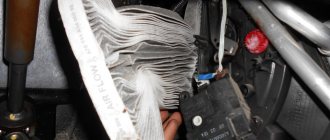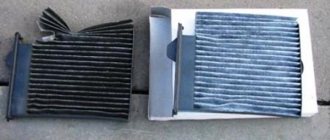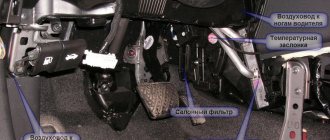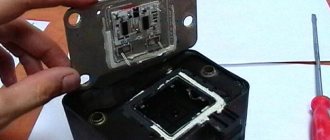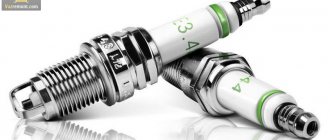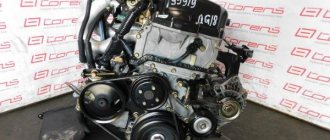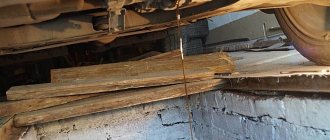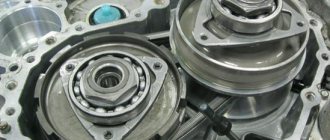Nissan Qashqai, produced in 2 generations and having undergone 2 restylings, has not lost its position in the market since 2008. A compact-looking car with the price and fuel consumption of a sedan, and the roominess and cross-country ability of a crossover, it is loved by many motorists in Russia.
Nissan Qashqai went on sale in 2007. This was the first generation, released in the J10 body, which was restyled in 2009 and was produced until 2012. Gasoline engines were presented in two versions - 1.6 and 2 liters (HR15DE\HR16DE, the same as in the Nissan Tiila C11).
The second generation Nissan Qashqai has been produced since 2013 in the J11 body. A petrol version with a 1.2-liter turbo was added, restyling was carried out in 2022. The Qashqai is still produced in this final form.
Timing for replacing spark plugs in Nissan Qashqai
In gasoline power units, which are installed on Qashqai of any year of production, the fuel-air mixture is ignited using a spark from the spark plugs. These parts can be classified as consumables that require periodic inspection and timely replacement.
In the combustion chamber, when the engine is running, constant thermal, chemical and electrical processes occur that affect the part of the spark plug located in the chamber.
Exposure to an incompletely burned fuel mixture, a pressure of 50-60 bar, a sharp change in temperature from 70 to 2500 degrees - all this creates an aggressive environment in which negative reactions occur with the tip. And the starting properties of the engine, its power, fuel efficiency and toxicity of processed products depend on the uninterrupted formation of a spark.
Correct operation of a car engine depends on timely checking and replacement of spark plugs. The replacement frequency recommended by the Nissan Qashqai manufacturer is every 30 thousand kilometers, or once every 1-2 years - this applies to all Qashqai models with a gasoline internal combustion engine.
The service life of consumables largely depends on its design and brand, so there is no need to rush into replacement - high-quality products can last 2 or even 3 times longer.
How does the service work?
The Nissan Qashqai maintenance regulations include technical work to prevent wear of the most important components and assemblies, and indicate the timing of their implementation recommended by the manufacturer. The full regulations are described in the Nissan Qashqai service book and in our calculator.
Our service center has been servicing these vehicles for more than eight years. You can independently calculate the approximate cost of maintenance using the calculator.
As part of the service, technical specialists in Moscow check the main vehicle systems, including:
- replacing oil, cabin, air and fuel filters;
- changing engine oil, antifreeze and brake fluid;
- replacing spark plugs;
- computer diagnostics of all systems;
- inspection of lighting, steering, suspension and braking systems.
Maintenance regulations for Nissan Qashqai manual and automatic transmission
| P – check | C – lubricant | PS - inspection and lubrication | Z – replacement | T – pull-up | |||||||||||||||
| Maintenance frequency (months or kilometers), whichever was earlier. | |||||||||||||||
| Number of months passed | 12 | 24 | 36 | 48 | 60 | 72 | 84 | 96 | 108 | 120 | 132 | 144 | 156 | 168 | |
| Mileage in thousand km. | 15 | 30 | 45 | 60 | 75 | 90 | 105 | 120 | 135 | 150 | 165 | 180 | 195 | 210 | |
| 1 | Engine oil and oil filter. | Z | Z | Z | Z | Z | Z | Z | Z | Z | Z | Z | Z | Z | Z |
| 2 | Accessory drive belts, pulleys. | P | P | P | P | P | P | P | P | P | P | P | P | P | P |
| 3 | Engine cooling system (fluid level, visual inspection). | P | P | P | P | P | P | P | P | P | P | P | P | P | P |
| 4 | * Cooling system fluid. | P | Z | P | Z | P | Z | ||||||||
| 5 | Air filter. | P | Z | P | Z | P | Z | P | Z | P | Z | P | Z | P | Z |
| 6 | Fuel system, fuel lines. | P | P | P | P | P | P | P | P | P | P | P | P | P | P |
| 7 | Engine management system (including oxygen sensor). | P | P | P | P | P | P | P | P | P | P | P | P | P | P |
| 8 | Spark plug. | P | Z | P | Z | P | Z | P | Z | P | Z | P | Z | P | Z |
| 9 | Direction of light and luminous flux of headlights. | P | P | P | P | P | P | P | P | P | P | P | P | P | P |
| 10 | Wheel condition and tire pressure. | P | P | P | P | P | P | P | P | P | P | P | P | P | P |
| 11 | Brake pads, brake discs, cylinders. | P | P | P | P | P | P | P | P | P | P | P | P | P | P |
| 12 | Working brake system. Pedal and parking brake (braking efficiency). | P | P | P | P | P | P | P | P | P | P | P | P | P | P |
| 13 | Vacuum hoses, brake pipes and their connections. Brake booster control valve. | P | P | P | P | P | P | P | |||||||
| 14 | Brake system and clutch: fluid level, presence of leaks. | P | P | P | P | P | P | P | P | P | P | P | P | P | P |
| 15 | Brake fluid. | Z | Z | Z | Z | Z | Z | Z | |||||||
| 16 | Cabin filter. | P | Z | P | Z | P | Z | P | Z | P | Z | P | Z | P | Z |
| 17 | Cruise control system. | P | P | P | P | P | P | P | P | P | P | P | P | P | P |
| 18 | Manual transmission oil (only for vehicles with manual transmission) | P | P | P | P | P | Z | P | P | P | P | P | Z | P | P |
| 19 | Automatic transmission oil (only for vehicles with automatic transmission) | P | P | P | Z | P | P | P | Z | P | P | P | Z | P | P |
| 20 | Steering mechanism and drive (presence of play), suspension elements. | P | P | P | P | P | P | P | P | P | P | P | P | P | P |
| 21 | Engine exhaust system. | P | P | P | P | P | P | P | P | P | P | P | P | P | P |
| 22 | Drive shafts (half shafts). Conditions of axle shaft boots, CV joints. | P | P | P | P | P | P | P | P | P | P | P | P | P | P |
| 23 | ** Checking the body for corrosion (body inspection). | P | P | P | P | P | P | P | P | P | P | P | P | P | P |
| 24 | Seat belts (functioning, damage). | P | P | P | P | P | P | P | P | P | P | P | P | P | P |
| 25 | Hinges and locks of doors, hood, trunk. | PS | PS | PS | PS | PS | PS | PS | PS | PS | PS | PS | PS | PS | PS |
| 26 | Front and rear windshield wipers, windshield washer system, fluid level. | P | P | P | P | P | P | P | P | P | P | P | P | P | P |
| 27 | Battery (level, electrolyte density, terminal lubrication). | P | P | P | P | P | P | P | P | P | P | P | P | P | P |
| 28 | *** Airbag | — | — | — | — | — | — | — | — | — | — | — | — | — | — |
| * The first replacement is made upon reaching 90,000 km or 72 months of operation, each subsequent replacement after 60,000 km or 48 months of operation. | |||||||||||||||
| ** Inspected annually or with appropriate maintenance. | |||||||||||||||
| *** Inspection after 10 years of operation, then every two years. |
Causes of wear and signs of need for replacement
In order for the spark plugs to ensure proper and trouble-free operation of the engine, the following rules must be observed:
- when screwing the spark plug into the engine block, the force specified by the manufacturer must be applied - no more, no less;
- you need to use fuel of the brand and quality recommended by the car supplier;
- the spark plugs must also be suitable - the manufacturer provides a list of recommended brands with part parameters.
In addition, the serviceability of the power supply and ignition systems affects the duration of their correct operation.
Of course, in any case, spark plugs are subject to natural wear and tear due to the aggressive environment in the combustion chamber, but if the manufacturer’s recommendations are not followed, parts wear out much faster, and the use of unusable spark plugs negatively affects the operation of the power unit.
Reasons for premature wear of spark plugs on Nissan Qashqai:
- Incorrect air-fuel mixture ratio. This is possible if the flow meter or lambda probe is faulty, or if excess air is sucked in.
- Installing consumables that do not match the engine or choosing fuel of too low quality.
- Misfire in one or more cylinders. If the fuel in even one cylinder ignites later than in the others, or does not ignite at all, this greatly reduces engine power and increases fuel consumption, which also affects the rate of wear of the spark plugs.
- Reduced compression in the cylinders. This problem can be noticed by reduced engine thrust, difficult starting and too much consumption per 100 km.
- Incorrect ignition angle setting. This leads to a specific problem - the appearance of carbon deposits on the candles.
- Oil getting into the working volume of the internal combustion engine and, as a result, wear of the valve stem seals.
Each of these points individually can lead to an acceleration of the natural wear of the spark plugs and even greater disruption of the engine. If you notice the problem in time, you can get by with calcining and cleaning the spark plugs, but if you delay checking, all the spark plugs will have to be replaced with new ones.
The fact that the time has come to change the spark plugs can be understood not only by the operation of the engine. A visual inspection of the spark plug can inform the car owner about the need for replacement and the reason that led to this.
Signs of malfunctioning spark plugs on a Nissan regarding the operation of the internal combustion engine:
- error message “CHECK ENGINE” on-board computer;
- misfires;
- long start of the internal combustion engine;
- floating speed;
- increased gasoline consumption;
- abnormal smokiness of exhaust gases.
Visual signs of faulty spark plugs on a Nissan:
- black deposits on the central electrode - the air filter is clogged, incorrect adjustment of the ignition timing or injection system, which led to too much fuel in the mixture;
- a light gray or even white electrode - the air-fuel mixture, on the contrary, is too “poor”, which can ultimately cause burnout of the exhaust valves;
- the red color of the central electrode skirt indicates a low octane number of the fuel being poured and an excessive amount of additives with metal in it;
- traces of oil on the spark plug, especially on the threads - the problem is too much lubricant consumption and poor condition of the valve stem seals;
- the central electrode is destroyed - early ignition, prolonged engine operation with detonation or low quality gasoline.
To keep the condition of the spark plugs and the serviceability of all cylinders under control, it is recommended to unscrew the consumables every 10,000 km and check their appearance.
Setting up the hatch
If the roof of the Nissan X-Trail does not work in automatic mode, you need to activate the hidden function to restore its normal operation.
Let's list the procedure:
- If the hatch is open, close it. This may require clicking the control multiple times.
- Keep pressing the "raise" button until the lid reaches the raised position, then release it and press again. Holding the control for 4 seconds will be enough to completely close the sunroof and initiate sunroof calibration.
| Resetting the service interval |
| Replacing brake fluid |
| Replacing brake fluid (abs) |
| Replacing the fuel filter |
| Replacing spark plugs |
| Replacing the cabin filter |
| Replacing the drive belt |
| Coolant replacement |
| Changing the oil in the front axle gearbox |
| Changing the oil in the rear axle gearbox |
| Changing the oil in the transfer case |
| Changing the oil in manual transmission |
| Changing the engine oil and oil filter |
| Changing the automatic transmission oil |
| Replacing brake light bulbs |
| Replacing headlight bulbs |
| Replacing low beam lamps |
| Replacing power steering fluid |
| Replacing the air filter |
| Topping up technical fluid |
| Handbrake adjustment |
| Removing/installing crankcase protection |
| Timing chain replacement |
| Injection of crosses |
| Replacing disc brake pads |
| Replacing brake pads with electronic handbrake |
| Replacing drum brake pads |
| Chassis diagnostics |
| Checking the battery charge level (recharge as necessary) |
| Checking the condition of tires and tire pressure (adjusting pressure if necessary). |
| Checking the operation of indoor and outdoor lighting devices |
| Checking the operation of windshield wipers, windshield washers, adjusting windshield washer jets. |
| Checking the installation of windshield and rear window wiper arms. |
| Checking the operation, cleanliness and lubrication of door locks, hood, trunk. |
| Checking the condition of body parts and paintwork |
| Checking the condition of pipelines (intake, exhaust, fuel supply, brake) |
| Checking the condition of rubber elements (dust covers, supports, pipes, bushings, etc.). |
| Checking the level and topping up as necessary operating fluids (coolant, brake, washer, electrolyte, etc.) (*) |
| Checking the parking brake operation. |
| Checking the engine management system (via common diagnostic connector). |
| Check the condition of the side sliding door guides (or every 6 months). cleaning and adjustment as necessary. |
| Checking the condition and wear of the brake pads of the front disc brakes and the operation of the pad wear indicator |
| Checking the condition and wear of the rear disc brake pads and the operation of the pad wear indicator |
| Checking (visual) the condition of the drive belt(s) of additional equipment (models without automatic tensioner) |
| Checking the tension of the accessory drive belt (models without automatic tensioner) |
Stop overpaying official dealers for maintenance for fear of losing the factory warranty! Contact the technical center. We perform maintenance while maintaining the factory warranty quickly, efficiently and 20-30% cheaper!
What spark plugs to buy for Nissan Qashqai
All spark plug manufacturers label their parts. The marking specifies the glow number (thermal properties), seating and geometric dimensions and design features of the candle. Spark plugs with the following parameters are suitable for Nissan Qashqai:
- thread with a diameter of 12 mm;
- thread length – 26.5 mm;
- heat number – 6.
From the factory, Nissan Qashqai G 10 and 11 with 1.6 and 2.0 liter gasoline engines are equipped with NGK spark plugs, catalog number 22401-CK81B. An analogue from the same company since 2014 is PLZKAR6A-11 (NGK5118), however, their price will be an order of magnitude higher.
Other analogues of spark plugs that can be selected for Nissan Qashqai from 2015:
| Brand | vendor code | Electrode material |
| Beru | Z325 | platinum |
| Bosch | 0242135524 | platinum |
| Denso | 22401-JD01B | iridium |
| Denso | FXE20HR11 | iridium |
| Champion | OE207 | platinum |
Platinum and iridium electrodes have a longer service life - they are the most resistant to burnout, with a tip with high thermal conductivity, and such spark plugs last longer, as customer reviews indicate, however, their cost is higher than average.
When buying spark plugs with platinum coating from an unverified seller, you can easily run into a fake and eventually harm the engine, so you shouldn’t chase a low price, it’s better to pay a little more, but buy original and high-quality parts.
When is next service required?
Maintenance two on Nissan Qashqai is carried out when the kilometers reach 30 thousand, the list of works is the same as during maintenance1. If the car is more than 2 years old, you can carry out maintenance 2 even with less mileage. In addition to the routine maintenance already listed, it is necessary to replace the cabin and air filters, and brake fluid (one liter is needed). DOT-4 is suitable for Nissan, the cost of which is $6. The main task of maintenance at 30,000 mileage is to replace the lubricant in the engine.
Inspection 3 is carried out at 45,000 mileage. The requirements of TO 45000 are exactly the same as the first, except that you need to replace the fuel filter; it is relatively expensive - about $12.
Maintenance 4 is similar to the second inspection; it should be carried out at 75,000 mileage. If the car has a CVT, at 75,000 maintenance the fluid in it needs to be replaced; this is 8.9 liters, the price will be 44 dollars. It is better to use the original Genuin Nissan CVT Fluid NS-2.
The action table in the service book indicates the need to change the lubricant in the transfer case at a given mileage, and it is also necessary to replace the lubricant in the gearboxes. In total, the liquids cost about 60 USD. e.
Inspection number 5 is carried out at 90,000 mileage. Maintenance 90000 includes the second and third service points, changing the oil in the gearbox if it is mechanical, changing the brake fluid, coolant, timing chain and chain tensioner rollers. It is recommended to replace the dampener as well. In total, excluding the cost of work, you will have to spend about $250.
Maintenance 6 is regulated to be carried out at 120,000 mileage. TO 120000 repeats the full list of requirements of the zero procedure.
Replacing spark plugs on a Nissan Qashqai with your own hands
Changing spark plugs yourself is not very easy, especially if you have no experience with such manipulations. But the road will be mastered by those who walk, so the main thing is not to give up in advance and follow the instructions and recommendations of the manufacturer.
Tools required for replacement:
- large ratchet;
- extension cord to it;
- socket heads for 8 and 10 (or spanners of the same size);
- torque wrench for tightening threads with a precisely specified torque;
- flat screwdriver;
- spark plug wrench 14;
- a set of new candles and clean rags.
Replacing candles is done one at a time: only when all work with one candle is completely finished is it worth starting the next one. This is done to ensure that unnecessary objects or debris do not get into the cylinders.
And before you start servicing, it is highly recommended to take a photo or video of the original location - it is too easy to get confused and mess up after installing new spark plugs.
What to choose?
Today you can see a variety of spark plugs on the shelves of automotive stores. The dealer recommends using original products. This is NGK PLZKAR6A-11. It is worth noting that the original model has specific characteristics - a long skirt and a small hexagon size (14 millimeters).
The cost of the original kit is high, so many people install analogues. These include platinum candles “Bosch”, “Champion”, as well as “Denso”. Is it possible to use iridium spark plugs on a Nissan Qashqai? Experts note that such elements work absolutely adequately on a Japanese engine. Among these, it is worth noting the products FXE20HR11 from.
Can I use spark plugs without platinum or iridium coating? Unfortunately, in the case of the Nissan Qashqai, you won’t be able to save money. The fact is that ordinary spark plugs simply will not fit into the engine, since they have a different standard size.
Step-by-step instructions for replacing spark plugs on a Nissan Qashqai
- The engine cover is removed - it is held in place by two 10mm bolts.
- The manifold is screwed to the head with bolts that need to be unscrewed. 5 - in the front of the engine, 1 - to the left of the manifold. The last bolt will be removed after removing the throttle body.
- The purge valve connector is disconnected, the air filter pipe and the vacuum hose are removed.
- The throttle connector is held on by 4 bolts, one is located immediately under the damper. All bolts around the perimeter are unscrewed.
- The clamps are loosened and 2 hoses are disconnected from the throttle valve. It is better to plug them with bolts so that antifreeze does not leak out.
- The damper is removed or moved to the side.
- Under the throttle there is the last bolt that holds the manifold - you need to unscrew it and remove the intake manifold, disconnecting all the hoses.
- The connection point of the collector is wiped with a clean rag, and it is advisable to plug the hole in which the probe is located with it - this way you can prevent dust and debris from getting inside.
- The ignition coil bolts (10mm head) are unscrewed and all wires are disconnected.
- The coil is dismantled by pressing the latches.
- The candles are torn off with a candle holder, the spark plug wells are blown out using a compressor or wiped with a clean rag.
- We take out the old spark plugs one by one and replace them with new ones, tightening with a force of 19-20 N*m.
All parts are assembled in reverse order. It is advisable not to install the old gasket of the intake manifold and throttle assembly, but rather to splurge on new ones, they are inexpensive.
Force required to tighten bolts:
- throttle valve – 10 N*m;
- intake manifold – 27 N*m.
During the process of replacing spark plugs or immediately after it, it is recommended to carefully inspect the old parts to determine what problems there are with the internal combustion engine or ignition, and whether it is time to diagnose the main components and parts in detail.
When to Replace
As mentioned at the beginning, it is important to know not only how to change the product and with what, but also when this operation is necessary. Because not all transport problems can be solved by simply replacing spark plugs
It is recommended to carry out a complete replacement only when a person encounters the following problems:
- The engine takes a long time to start or stalls quickly;
- Malfunctions occur during engine operation;
- There are strange dull sounds in the engine;
- When the car moves, it jerks or shakes, and this also occurs at idle speed;
- Fuel consumption increases;
- More carbon monoxide is released from the exhaust pipe;
- Engine power decreases and dynamics are lost.
If a person encounters at least one of the listed points, it is worth immediately checking the functionality of the spark plug. If this is not done on time, you may get stuck in the middle of the highway or not make it to work. However, if the replacement did not help in any way, then the problem may be hidden not in the fake elements, but in the ignition coil, because some signs of a malfunction are similar.
It is easy to check the serviceability of the spark plug; unscrew it, then connect the wire and lean the electrode against the metal part. For example, a valve cover is often used for these purposes. Once the conditions are met, it is necessary for an assistant to turn the starter. If a spark appears, then everything is fine with the element, otherwise it must be replaced
It is important to remember that the replacement is complete. No old products should remain
To avoid any problems, it is important to change spark plugs on time and check their performance from time to time. The replacement must be carried out within a strictly prescribed time frame; you should never delay it, otherwise the person risks getting to the destination on foot
Throttle learning
If, when replacing spark plugs, the throttle assembly was not disconnected, but simply moved to the side, then throttle training will not be required. But if the damper has been removed completely, it’s worth picking up a stopwatch and performing the necessary manipulations.
- The internal combustion engine and transmission are warming up.
- All electrical appliances are turned off.
- The gearbox lever is moved to “P”.
- The battery charge is checked - it must be at least 12.9 V.
- The engine stops.
- Pause 10 seconds.
- The ignition is turned on (without starting the power unit and pressing the pedals).
- Pause 3 seconds.
- In 5 seconds, you need to press the gas pedal 5 times and release the gas pedal.
- Pause 7 seconds.
- You need to depress the accelerator pedal all the way and hold it until the word “CHECK ENGINE” appears.
- After the indicated signal appears, the pedal is pressed for another 3 seconds, then released.
- The engine starts. It should idle for at least 20 seconds.
- By pressing the pedal a couple of times (exactly how many times is at the discretion of the owner), sharply gain momentum and, releasing it, reduce it.
If all manipulations are performed correctly and in the correct sequence, the idle speed should be about 700-750 rpm.
Location of VIN and engine number Qashqai J11
The Nissan Qashqai J11 is of little interest to car thieves, but there have been cases of car theft from its owners. Therefore, checking forensic markings is a mandatory initial point in checking a used car. The main VIN number is located on the top of the engine shield slightly to the left (in the direction of travel) from the center axis of the car. To access it, as is standard for Nissan, you need to remove the plastic plug.
The engine number on all Qashqai J11 units is located in the front part and even a beginner will not have problems finding the markings. An approximate location can be seen in the diagram:
